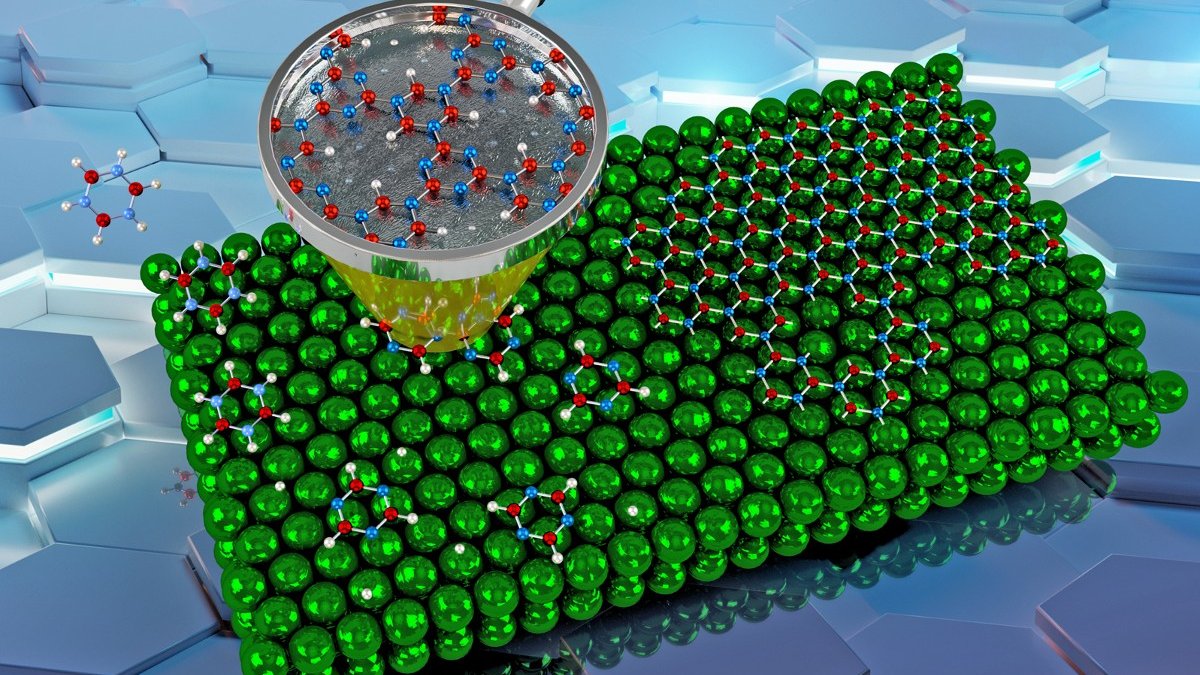A new process to build 2D materials made possible by quantum calculations
Quantum calculations performed by researchers from the University of Surrey have allowed scientists to discover new ‘phases’ of two-dimensional (2D) material that could be used to develop the next generation of fuel-cells devices.

The calculations aided Graz University of Technology's research into the growth of one of the most promising 2D materials, hexagonal boron nitride (h-BN) - which has a honeycomb crystal structure almost identical to that of the most famous 2D material, graphene.
Dr Anton Tamtögl, the project lead from Graz University of Technology, said:
"The nanoporous phases discovered during our research are not of purely academic interest - they offer the potential for applications such as sensor materials, nanoreactors, and membranes. This work illustrates that fundamental physics and chemistry offer routes to truly relevant nanotechnology applications."
Ultra-thin 2D materials are frequently grown by exposing a hot metal surface to a specific gas, which results in the gas decomposing on the metal and forming the desired 2D material. Due to the hot temperatures involved, it is difficult to monitor the growth of 2D materials during the several intermediate steps involved before the 2D material is completed.
The results obtained by Graz’s group show that, before h-BN is formed, other 2D surface structures can be isolated.
Quantum mechanical calculations led by Surrey’s Dr Marco Sacchi have allowed their colleagues to understand that these ordered structures are made by regularly spaced holes (so-called nanopores) of h-BN. This is the first time that these open structures have been identified, and their role during the growth of h-BN has been observed.
Dr Marco Sacchi from the University of Surrey said:
"We proved that the combination of experiments and quantum chemical calculations can provide new and important insight into the growth of 2D materials.
"We are already planning to employ our method for studying the growth of other 2D materials, and we are working with international collaborators to find ways to accelerate the development of these promising materials."
Anthony Payne, co-author from the University of Surrey, said:
“These nanopores are unlike anything seen before and may open up a new generation of nanomaterials with exciting possibilities in nanotechnology and catalysis.”
Adrian Ruckhofer from Graz University of Technology
"Finding a new phase for such a well-known and technologically important 2D material is like discovering a completely new species of butterfly in your own garden."
The research has been published by the journal Nanoscale Horizons.
Notes to editors
Reference: Evolution of ordered nanoporous phases during h-BN growth: controlling the route from gas-phase precursor to 2D material by in situ monitoring ; Adrian Ruckhofer, Marco Sacchi, Anthony Payne, Andrew P. Jardine, Wolfgang E. Ernst, Nadav Avidor and Anton Tamtögl; Nanoscale Horizons
Contact:
University of Surrey, United Kingdom:
Dr Marco Sacchi, Homepage: https://www.surrey.ac.uk/people/marco-sacchi
E-Mail: m.sacchi@surrey.ac.uk
Media Contacts
External Communications and PR team
Phone: +44 (0)1483 684380 / 688914 / 684378
Email: mediarelations@surrey.ac.uk
Out of hours: +44 (0)7773 479911
